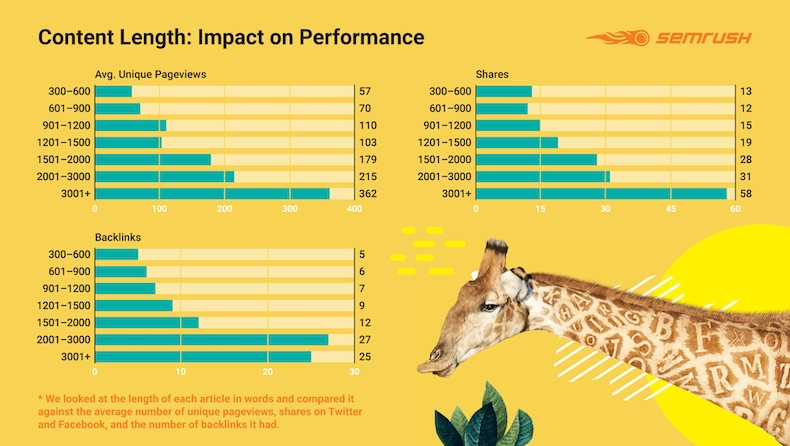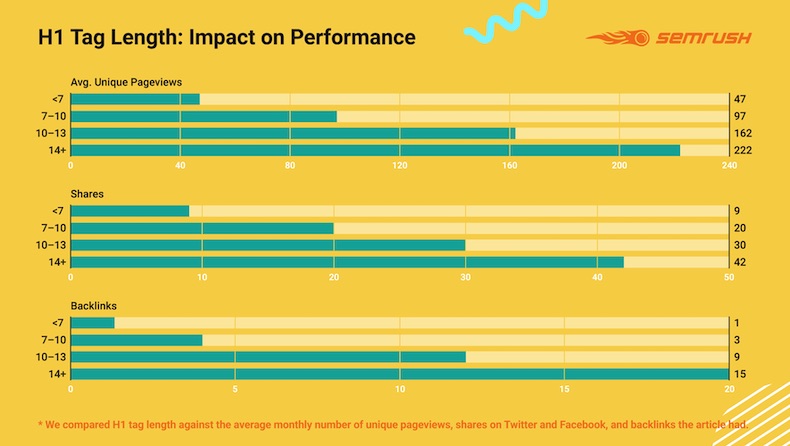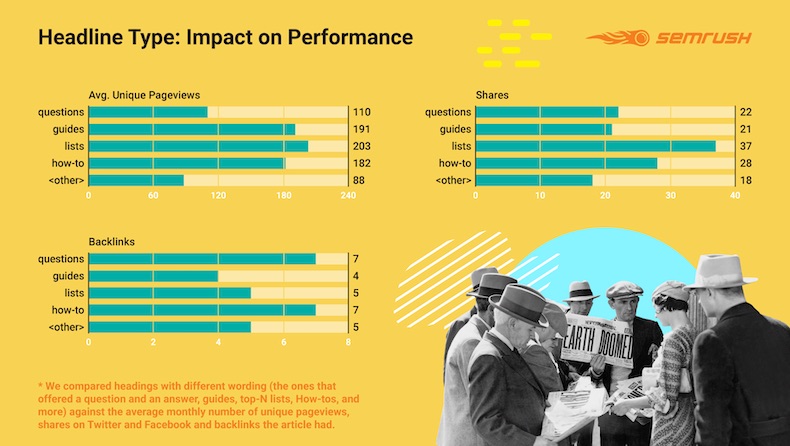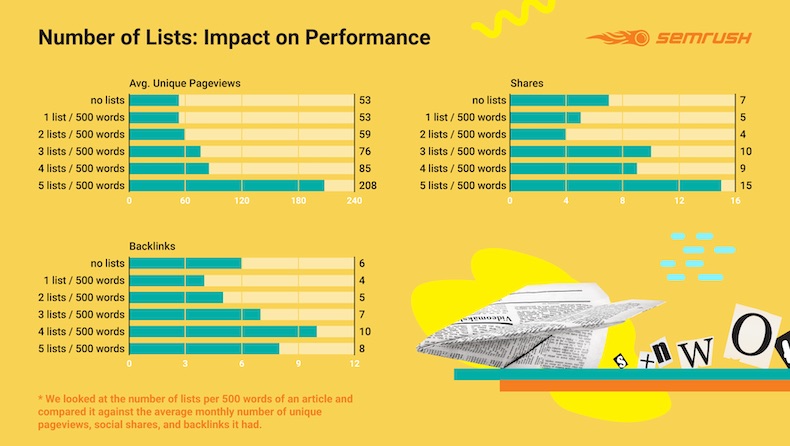Do top-performing blog posts tend to have certain characteristics in common, such as copy length, headline length, headline type, and content structure?
To find out, SEMrush analyzed 700,000 posts on blogs that receive between 50,000 and 500,000 average monthly unique pageviews. The researchers evaluated the performance of each post by looking at its traffic (average unique pageviews), engagement on social media (Twitter and Facebook), and backlinks. They then examined how the top-performing posts differed from other posts.
Below, key findings from the report.
Content Length
Blog posts with more than 3,000 words receive 3x more traffic, 4x more social shares, and 3.5x more backlinks, on average, compared with articles of average length (901-1,200 words), the researchers found.
Headline Length
Blog posts with lengthier headlines (H1 tags with 14+ words) receive 2x more traffic, 2x more social shares, and 5x more backlinks, on average, compared with articles with shorter headlines (7-10 words).
Headline Type
Blog post headlines that include list elements receive 2x more traffic and up to 2x more social shares, on average, compared with blog posts with other types of headlines.
Blog posts headlines that include how-to elements or questions tend to receive more backlinks, on average, compared with blog posts with other types of headlines.
Content Structure
Some 36% of the posts analyzed with H2 and H3 tags had higher than average traffic, shares, and backlinks, indicating that well-structured pieces are more likely to perform well.
Posts heavy on lists (those with 5 lists per 500 words) receive 4x more traffic and 2x more social shares, on average, compared with posts with no lists.
About the research: The report was based on an analysis of 700,000 posts on blogs that receive between 50,000 and 500,000 average monthly unique pageviews. The researchers evaluated the performance of each post by looking at its traffic (average unique pageviews), engagement on social media (Twitter and Facebook), and backlinks.








